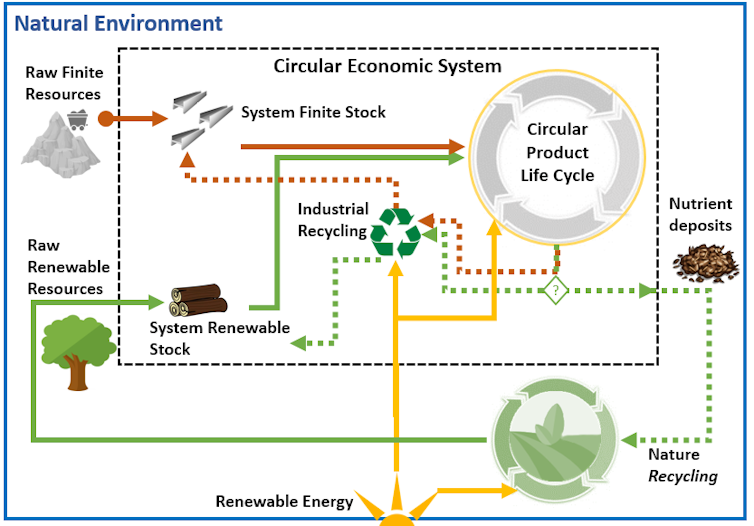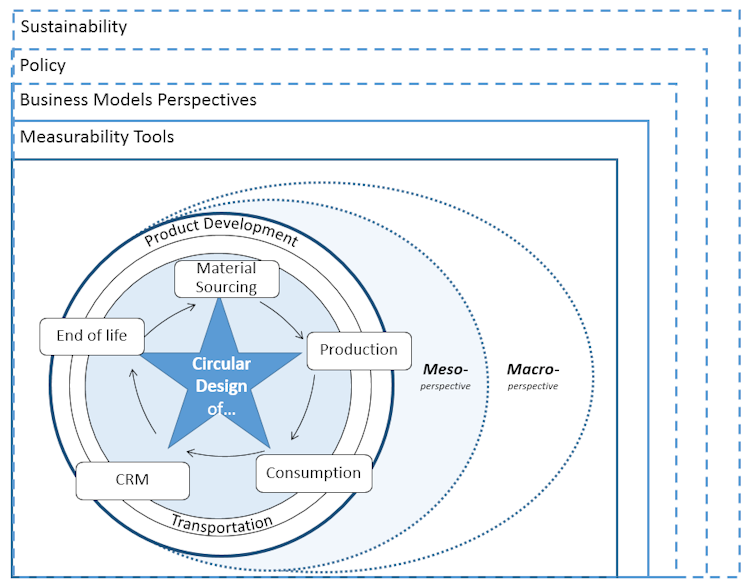The earth is a closed system. Apart from the energy we receive from sunlight, everything produced and consumed on earth is based on its own resources. It is also a special planet. One of the “Fridays for Future” kids wrote: “Save the earth, it is the only planet that serves pizza.” Our planet can do that, because as far as we know, it is the only one supporting life and does so by well equilibrating different life forms. Plants breathe in the CO2 that animals breathe out, while producing the oxygen animals need to breathe. Almost all substances contained in plants and animals become nutrients for other life forms at some point. Plants are eaten by animals; animals eat other animals, and after dying, both decompose into biomolecules and minerals becoming part of the next generation of plants and animals. The building blocks of life are recycled in an endless circle.
Read Also: Climate Change Resilience Could Save Trillions – but How to Fund It?
Unfortunately, the waste and emissions that humans and households produce are often insalubrious and do not come with the advantage of being someone else’s favorite meal. In particular, a significant portion of industrial waste is currently dumped or burned; accumulates as emissions in the air and the atmosphere, litters our beaches or floats as microplastics in the oceans. Animals often accidently eat it and thus bring it back on our plates, but that is certainly not the kind of circle we want.
The economy is using up the resources it lives on
While everything in nature is disassembled and reused, “waste” is actually not waste, but part of the circulating resource pool. Human production and consumption still works with a linear resource flow, however: we take valuable and in many cases finite resources and use them up in a process that transforms them into harmful emissions, excess heat, and plastics-metals compounds that cannot be recovered by nature. This is not only wasteful, but it also endangers our long-term survival, because – remember – the earth is a closed system performing a precarious balancing act.
If we continue to disregard the closed system dynamic of the earth, the economy will run out of fossil fuels, the oil we use to produce plastics and synthetics, the minerals and metals that we grind down to dust and even of some renewable resources if we are not careful and jeopardize them – as threatens to happen with our seafood, agriculture, and the supporting insect population.
Circulating substances – circular economy

In a growing world with an increasing population that gets richer and demands even more consumption, it is high time to find a balanced solution for our activities. Nature provides us with the template. Plant and animal species are well equilibrated with each other and each habitat only contains the amount and size it can support. Our economy should be organized the same. It should only take renewable resources in amounts that can recover, not rely on non-renewables and not burn fossil fuels releasing carbon that has been stored for millions of years, in just a few.
The good news is that nature shows how that is possible with only the influx of energy from the sun and that concepts on how to transfer this idea to our economy are plentiful. They are discussed in research and practice under many terms, the best known and most far reaching being the concept of a circular economy which is actively supported by influential institutions such as the Ellen MacArthur foundation, or EU research programmes.
More than just recycling
What does a circular economy mean? It is often misunderstood as just good recycling. While it is certainly true that the proper collection and treatment of waste and products, machines, clothes or buildings and other artefacts at the end of their usage is a key element of a circular economy, it is by far not the only requirement and not necessarily the one to start with. Circularity must be built into every stage of a product’s life cycle. It starts with first developing the product and does not end with collecting it after use.
To make an economy fully circular, products have to be designed differently. They have to contain materials that are available and unproblematic – ultimately only renewable ones – sourced in a non-destructive manner, in supportable amounts and assembled into compounds that can be disassembled after usage. Production, consumption and recovery process, as well as recycling and all transportation involved need to be fueled by renewable energy and the entire amount of activity in a given area should not surpass its carrying capacity. This requires well balanced sizes and activities on the meso level of cities up to the macro level of national economies and the world economy – with its current high level of interchange.
The concept of a well-designed circular economy does not exclude such trade and exchange, but it needs to be tracked that circular requirements are still fulfilled. Just shipping our used electronics to Ghana would certainly not qualify as adequately circular, where they are often burned by children on waste dumps emitting highly toxic fumes as they desperately try to extract some copper cables.

Circular economy as a business model?
Obviously a circular economy will not work unless it pays, but clever business models and promising technologies are in no short supply. Companies are developing new ways to produce fertilizer out of thin air, avoid food waste or produce food in better equilibrated plant-animal ecosystems than in traditional agriculture or from different, more sustainable sources.
Solutions are around; it is up to us to make them work, to let the planet continue to be the (only?) one that serves pizza.
Sylvie Geisendorf, Professor of Environment and Economics, Member of Deloitte-Chair “Circular Economy”, ESCP Europe and Paul Wolf, PhD Candidate – Chair of Environment and Economics ••• Member of Deloitte-Chair “Circular Economy”, ESCP Europe
This article is republished from The Conversation under a Creative Commons license. Read the original article.